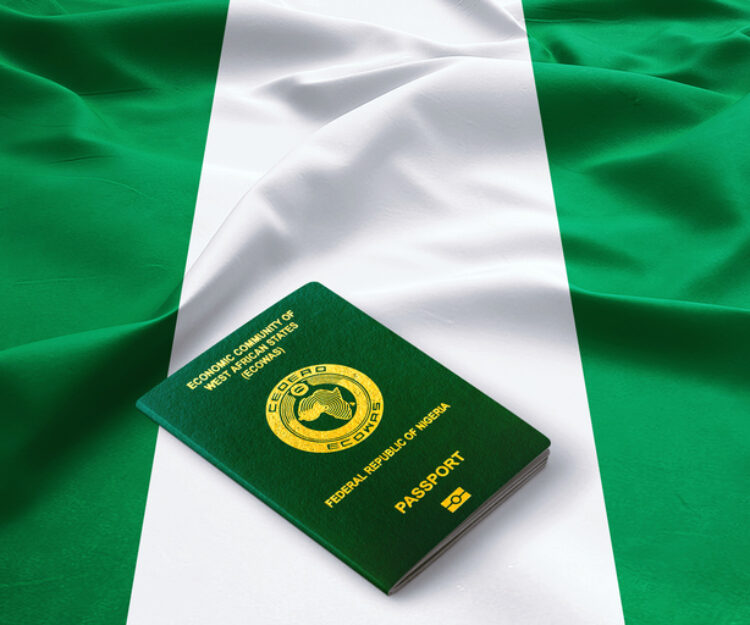Nation branding: How to market a country like Nigeria (1)

“Starlink, a satellite internet service designed by Elon Musk’s SpaceX, has announced plans to launch in Nigeria by late 2021 and expand to other African countries in 2022.”
At least, according to Tolu Ogunlesi, the Special Assistant to President Buhari on Digital and New Media. On Twitter, he shared this excerpt from a full report made by Tellimer’s Ayobami Omole. SpaceX has been in talks with the Nigerian Communications Commission for several months, regarding licensing of Starlink, its satellite-based broadband services. According to Technext, SpaceX’s objective is to provide low latency, high bandwidth internet to all corners of the world. Importantly, the company has identified Nigeria as a critical market in Africa.
Ladies and Gentlemen, SpaceX is coming to Nigeria. Even though Twitter didn’t. In Nigeria’s digital revolution is fast, but it can be faster, we noted Twitter’s decision to open a regional office in Ghana. Twitter said it chose Ghana because it supported free speech and online freedoms. Also, the country’s appointment to host the secretariat of the African Continental Free Trade Area.
Conversely, the Minister of Information and Culture, Alhaji Lai Mohammed blamed “unpatriotic Nigerians” for the decision. According to him, these Nigerians projected the image of the country negatively on social media platforms. “This is what you get when you demarket your own country”, he cried. “This will teach a lot of us a lesson that we have no country than Nigeria.”
Is it possible to demarket a country? Well, yes. Err… How then do you market a country? We know how. And that is the business of the day.
Enter, nation branding.
Nation branding

21st-century governments are increasingly in vigorous competition with one another to attract visitors and investments. They are turning to brand techniques to differentiate their nations on the global stage and to give themselves a competitive edge over rival countries. Nation branding encompasses the country’s whole image, including political, economic, social, environmental, historical, and cultural issues. Today’s branding efforts go beyond simple efforts at attracting tourism. Governments now hire public relations firms to help them launch sophisticated branding campaigns aimed at luring foreign investment, facilitating trade, improving private-sector competitiveness, or even securing geopolitical influence.
What forms do branding campaigns take?
Some campaigns seek to tie exports to positive preconceptions of the country. The French sell their art de Vivre (art of living) with Hermes scarves and Beaujolais Noveau. The Germans ride on the back of BMWs and Mercedes-Benz to sell efficiency and reliability. A nation’s companies can feed back into the country’s brand image. “Microsoft and McDonald’s are among the most visible U.S. diplomats, just as Nokia is Finland’s envoy to the world.”
There is also investment branding, where countries promote their business climate to lure foreign investment – infrastructure, financial markets, favorable tax structures, ease of doing business, or other incentives. The idea that developing countries need foreign investment to secure growth makes them hustle to look attractive.
Yet, countries focus on different areas. Of course, tourism promotion still dominates nation-branding efforts. Australia still sells an adventurous image.
Do branding campaigns work?
It is often difficult to tell how well they have worked – these reorientations of identity. The metabolism of a country is longer and slower than that of a product or a company. However, most nation-branding strategies fail miserably. They fail mainly because governments do not sustain the strategies. The calculations of politics enter into it, or a newly elected government rolls back its predecessor’s ideas, or the venture relies on superficial advertising. Citizens may not feel a
connection to a campaign, or may even rebel against it.
Nation branding also relies on the entire country – it only succeeds when it involves the various parts of the whole, from governments to stakeholders to citizens. The media is an important stakeholder. Admittedly, the media contributes to the perception of a country, whether it’s television news, tabloids, newspapers, or radio. Essentially, media controls the image of a nation’s brand. When investors consider investing in a country, or when a tourist considers visiting a country, they read the world press to form an impression. There are therefore dire consequences when media coverage primarily focuses on scandals, negative economic outcomes, and social issues.
Speaking about controlling the media, hello Nigeria.
Nigeria’s branding
Since the beginning of Nigeria’s sustained civilian rule, governments have focused on changing the national psyche, enhancing tourism, and attracting FDI through several image laundering campaigns. Olusegun Obasanjo (1999-2007) launched the “Heart of Africa” project. The branding expert behind it, Leke Alder of Alder Consulting, described it as “a program for Nigeria’s image management and progression”. The Musa Yaradua administration launched their more comprehensive version, with the motto “Nigeria: Good People, Great Nation”, and said it was aimed at “accelerating Nigeria’s development through foreign investment and tourism”. In 2016, the Nigerian government announced another initiative tagged “The Change begins with Me”, only a year after “Change” was the campaign slogan for President Muhammadu Buhari.
The challenges with these attempts were similar. Citizens never believed in or owned the campaigns. Second, the socio-economic indices required to fuel belief were non-existent. Also, newly elected governments simply rolled back their predecessor’s ideas, only to launch theirs. Finally, attempts were mostly superficial, they only reflected what proponents wished the world would see. They focused on awareness while the experiential side of the marketing project was largely ignored.
Speaking about experiential, how well is Nigeria attracting traditional tourism?
Tourism
In Nigeria, tourism is centered around activities happening in the country such as festivals. Also, attractions such as parks, cultural sites, and natural sites contribute to tourism in the country. The standout tourist sites include the Osun sacred groove in Osun State, Agodi Gardens in Oyo State, Olumo Rock in Abeokuta, Afrika Shrine in Ikeja, Agbokim Waterfall in Cross River State, Obudu Mountain Resort in Cross River State, Yankari National Park in Bauchi State and Zuma Rock in Niger State.
However, it seems like tourism revenues are on a free fall. According to World Bank Data, Nigeria’s Tourism Revenue reached 1.4 USD billion in December 2019 and 2 USD billion in December 2018, compared with 2.6 USD billion in 2017. In 2017, Tourism in Nigeria generated approximately 6% of the annual internally generated revenue in Nigeria. In the same year, tourism accounted for 34 percent of GDP and about 20 percent of employment creation, according to the National Bureau of Statistics.
Tourism influences the influx of people visiting the country. Recently, however, the coronavirus pandemic has impacted travel. According to Proshare Economy, travel into Nigeria was reduced by 3.5 million which resulted in a revenue loss of $ 0.7 billion. More importantly, tourism and travel are still impacted negatively by poor electricity, bad roads, and insecurity.

